Краш-тест Toyota Tundra
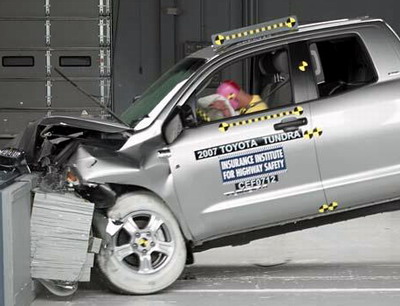
|
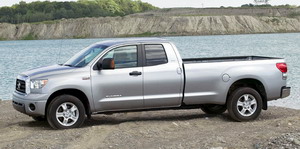
|
||||||||||||||||
|
Модельный год: 2007 Год проведения теста: 2007 Организация, проводившая тест: IIHS (США)
Общий рейтинг:
Легенда: уровень защиты |
Toyota Tundra SR5 (2wd Double Cab)
Вес: 5,158 lbs.
Комплектация: |
||||||||||||||||
|
ЛОБОВОЙ УДАР СО СМЕЩЕНИЕМ
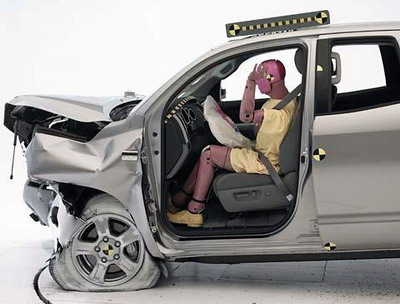 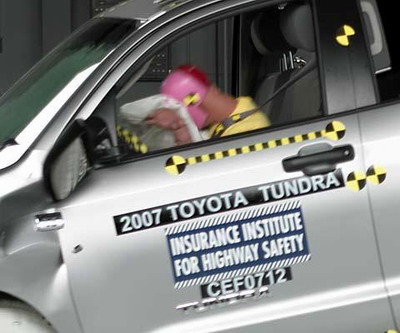 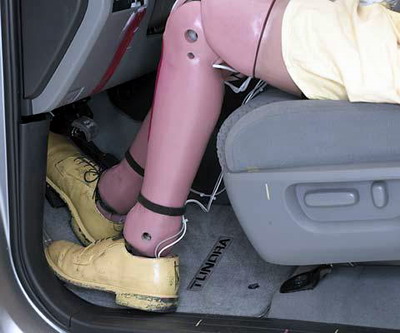
|
ЛОБОВОЙ УДАР СО СМЕЩЕНИЕМ
The Toyota Tundra was redesigned for the 2007 model year. Two tests of the Tundra were conducted, one by the Institute of a 2wd Double Cab and the other by Toyota of a 4wd Double Cab as part of frontal crash test verification. The overall rating of Good is based on review of both tests, which independently result in overall ratings of Good. The ratings and vehicle specifications based on the Institute’s test are shown below because the 2wd Double Cab is similar to the configuration of other pickups tested previously. Restraints/dummy kinematics Dummy movement was well controlled in both tests. During rebound in the Institute's test, the dummy's head hit the roof rail. Injury measures In each test, measures taken from the neck, chest, and one leg indicate low risk of injuries to these body regions in a crash of this severity. Forces measured on the left tibia in the Institute’s test indicate that injuries to the lower leg would be possible, but right leg/foot forces were low. (In the test conducted by Toyota, left leg/foot forces were low, but forces on the right foot indicate a possibility of foot injuries.) A high head acceleration occurred when the dummy's head hit the steering wheel through the airbag in the Institute's test, indicating that head injuries would be possible. (In the test conducted by Toyota, the head also hit the steering wheel through the airbag, but the head acceleration was low.) Head acceleration from the roof rail hit in the Institute's test also was low. |
||||||||||||||||
|
|
|||||||||||||||||
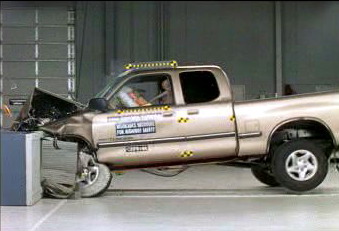
|
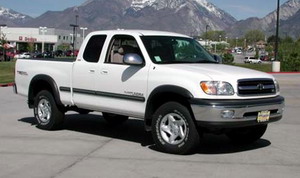
|
||||||||||||||||
|
Модельный год: 2001 Год проведения теста: 2006 Организация, проводившая тест: IIHS (США)
Общий рейтинг:
Легенда: уровень защиты |
Toyota Tundra SR5 (2wd Access Cab)
Вес: 4,363 lbs.
Комплектация: |
||||||||||||||||
|
ЛОБОВОЙ УДАР СО СМЕЩЕНИЕМ
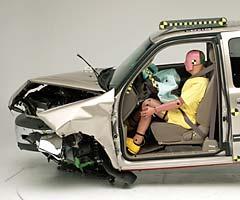 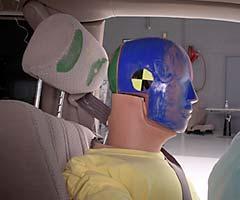 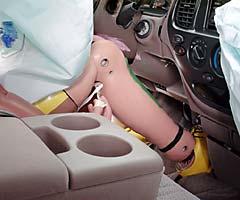
|
ЛОБОВОЙ УДАР СО СМЕЩЕНИЕМ
The Toyota Tundra was introduced in the 2000 model year. Restraints/dummy kinematics Dummy movement was well controlled. After the dummy moved forward into the airbag, it rebounded into the seat without its head coming close to any stiff structure that could cause injury. Injury measures Measures taken from the head and chest indicate low risk of injuries in a crash of this severity. Forces on the right tibia indicate that injuries to the lower leg would be possible. |
||||||||||||||||

 =Приемлемый
=Приемлемый  =Посредственный
=Посредственный  =Слабый
=Слабый